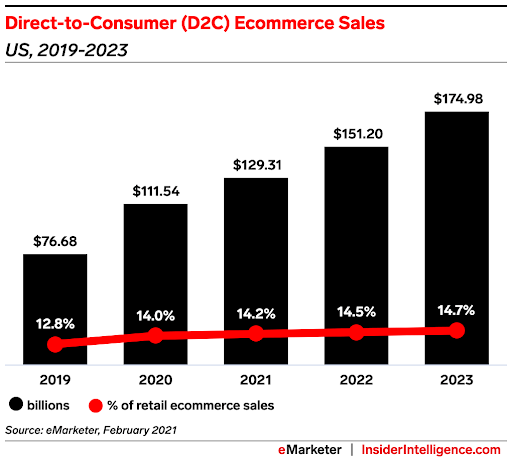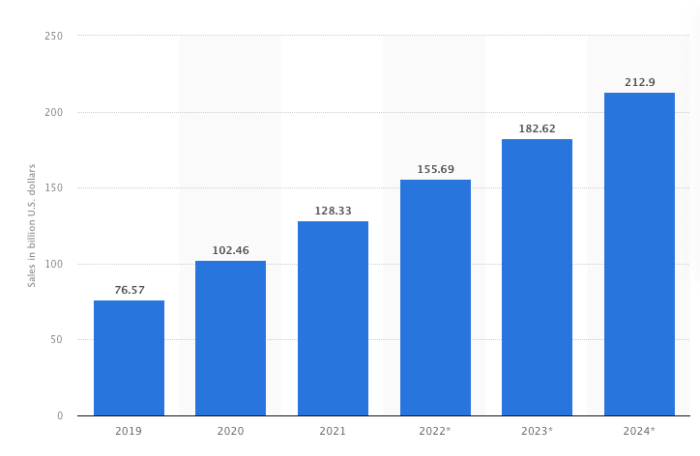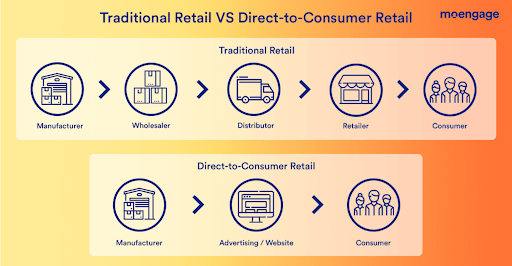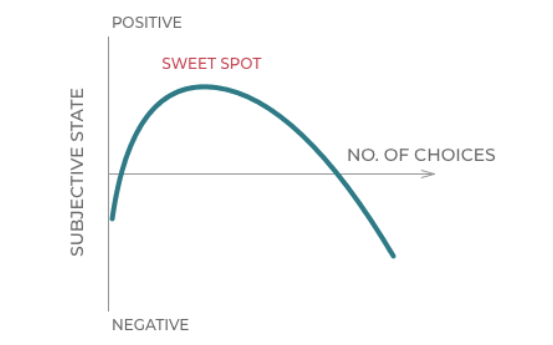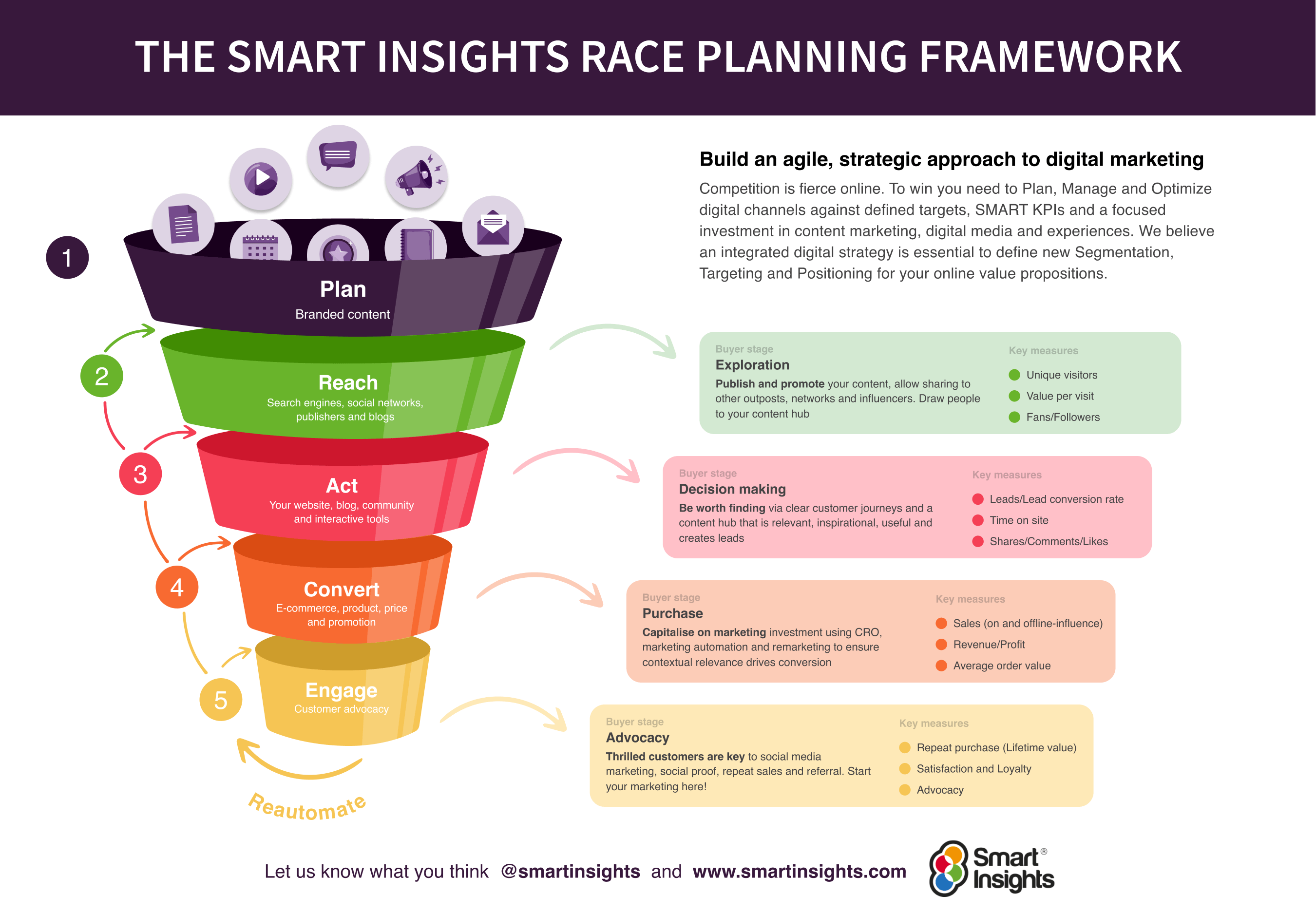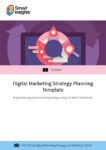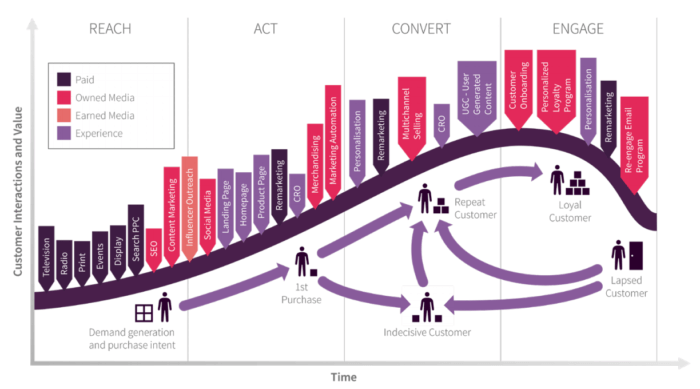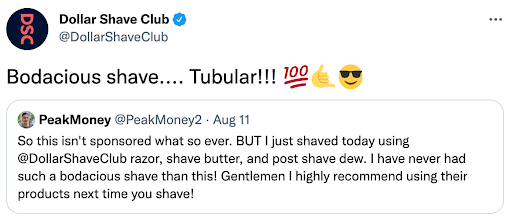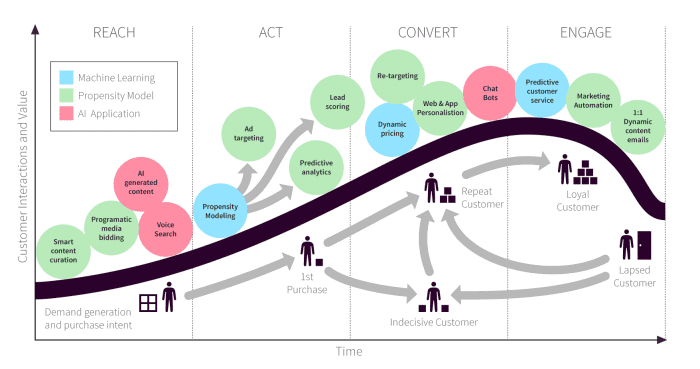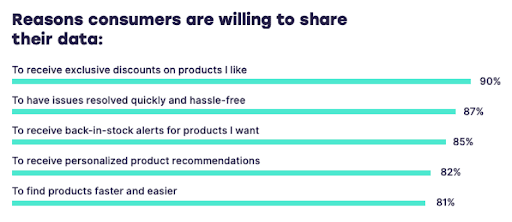How do direct-to-consumer businesses establish themselves in a competitive market? We look at how D2C businesses leverage owned data to reach and engage directly with consumers
In recent years, brands have realized the merits of owned and self-operated direct-to-consumer (D2C or DTC) sales channels. In line with ongoing global digitalization, D2C models saw even further acceleration and greater emphasis.
Direct-to-consumer e-commerce (D2C) sales in the US massed US $128.33 bn in 2021 and have been predicted to increase by 42% to $182.62 bn by the end of 2023.
Clearly, now’s the time to invest in your e-commerce marketing strategy. Whether your model is B2B, B2C, D2C, or a mixture – your channels and media will only be as effective as the marketing strategy that ties them all together.
We’ve got resources to streamline your e-commerce marketing strategy and planning, supporting you to make data-driven decisions to prioritize marketing activities that convert and retain high-value customers.
What is Direct-to-consumer D2C e-commerce?
D2C is where a brand manufactures, markets, and distributes its own products. There are no ‘middlemen’ in the process of making and selling products and services.
Typically a D2C brand ships directly to consumers, partners with retail locations or runs pop-up shops to distribute products.
As opposed to traditional retail, Direct-to-consumer strategy tends to offer a hyper-focused product range and a subscription-based distribution model.
By removing extra ‘parties’ from the sales journey, a brand can achieve reduced costs, interact directly with the end consumer, and provide a seamless brand experience. It can establish a customer-first approach, creating direct conversation through digital channels, with a solid grasp on the power of influencers and word of mouth.
A smaller direct-to-consumer product range means that the brand can hone and perfect both the product but also the sales funnel based on data-driven feedback. Emphasis can be put on reaching the right demographic through targeted advertising, consistently leading them through decision making and conversion.
In doing so, lengthy product analysis – often referred to as ‘analysis paralysis’ – is eliminated, which can lead to abandoned purchases.
The consumer has then directly interacted with the brand as part of a more engaging digital experience to build genuine advocacy.
The online shopping process is, therefore, simpler and easier, with the brand in control of the RACE Framework at each stage. At each stage, whether it’s at the reach, act, convert, and engage stage, the consumer interacts directly with strategic and branded channels.
You can find out more about the RACE Framework in Dr. Dave Chaffey’s RACE explainer blog. Or, join Smart Insights as a Free Member to download our free digital marketing plan template integrated across RACE to structure your next plan.
The benefits of D2C e-commerce marketing
D2C e-commerce brands have the ability to create a strong direct relationship with consumers at all stages of the RACE framework. In doing this, the business captures their own first-party data at every touchpoint to leverage for growth, improvements or to simply understand the consumer better.
To demonstrate this:
- REACH. Data-driven strategies can reach a more specific and relevant audience, targeted to their demographics and behaviour.
- ACT. Using the data, a D2C business can talk to the customer as an individual, addressing what is important to them to create leads.
- CONVERT. A D2C strategy has control over the entire customer journey and brand messaging can be focused on CRO.
- ENGAGE. Data-driven retention and loyalty programmes to achieve increased sales, higher LTV, reduced costs and higher margins.
The RACE Framework is popular with e-commerce businesses of all sizes – from startups to SMEs to multinational corporations, since the simple structure can be scaled up or down according to your business objectives. Evaluate your strengths and weaknesses and plan your next steps with support at every step of the way.
Addressing the challenges of D2C e-commerce marketing
It is clear why establishing a D2C brand is an attractive option.
Building a relationship directly with the consumer presents a unique opportunity to shape the offering, with vastly reduced costs compared to traditional retail. There are, of course, challenges that a D2C e-commerce model brings.
D2C entrant vs established brand name
A D2C brand is entering a market to do things differently but will be up against established leaders. For example, Dollar Shave Club vs Gillette.
Dollar Shave Club began in 2011 and was the first company to offer shaving club subscriptions directly to the consumer. The customer benefited from convenience and discounts compared to individually purchased products in stores. It was therefore an attractive proposition but was competing with Gillette, a brand that had been operating for over 100 years.
At this point, Dollar Shave Club was trying to reach a customer base that had been loyal to Gillette for decades. By cutting out the extra steps of the journey (having to buy in-store) and offering a more personal service, it was able to transform the consumer’s thinking. Targeted marketing explained the clear benefits of a subscription-based D2C service, and social media leveraged the engaged audience.
In 2010, Gillette claimed a US market share of 70%, but in 2016, it fell to 54%.
Demand for personalization
D2C business is typically digitally native. It builds the relationship through directly engaging with the consumer, and consequently captures a wealth of data.
Data that can be used to speak to the customer, and quite honestly, that’s what they expect. 61% of consumers would be willing to share more information with brands if it would allow them to have a better shopping experience.
Personalization marketing technology is the key to cementing the relationship, building loyalty, and creating genuine advocacy in an omnichannel world.
D2C customer experience
Using customer data effectively is where D2C can make up for a lack of in-person contact common with traditional retail. The challenge for a direct-to-consumer brand, therefore, is to adopt a fully data-driven personalization strategy.
In doing so, D2C brands can expect to:
- Maximize sales opportunities and order value
- Recommend products and increase LTV
- Improve repeat order frequency
- Increase market share and penetrate niche markets
- Create a unique digital experience
- Deliver greater levels of customer service
Adapting to swiftly changing customer habits
The shift to online adoption has been gradual, but since Covid-19, became a necessity. Many businesses and consumers will now be comfortable with their new routines, preferring a digital experience. Others may ultimately still feel more comfortable discovering products in store.
As a D2C e-commerce company, the challenge will be in keeping pace with the changes in customer habits.
Again, the vast data sources that can be collected throughout the RACE journey provides the basis to identify and adapt, to provide a personalized experience.
E-commerce marketing techniques for D2C brands
It is clear that D2C businesses are booming, so let’s take a look at some e-commerce marketing techniques for direct-to-consumer brands.
Influencer marketing
D2C businesses have realized the power of influencer marketing and are using it as a strategic tool. In the absence of in-person experience, and starting with no customers at all, rapid growth is the goal.
Influencers come to the rescue to boost the popularity of direct-to-consumer brands. They help to humanize an unfamiliar brand and are trusted for their product reviews, providing it comes across as authentic. The content can provide immediate reach and cut through as the followers are loyal to the influencer, and their opinion matters. The D2C brand can then use it as part of the marketing plan to amplify the trusted message, which is critical to advocacy and long-term loyalty.
For D2C businesses with smaller budgets, it is more sensible to work with many nano- or micro-influencers (typically less than 50,000 followers) than aiming for the bigger personalities. Brands will typically ask them to do something that they are doing already i.e. create videos using products, and reward with free items or payment.
This tool is likely to be cost-effective, and drive higher engagement rates providing the influencer is aligned to the D2C audience and brand positioning.
Gymshark famously leveraged influencer marketing to become a $500m business.
Content marketing for direct to consumer businesses
A D2C brand may have a minimal advertising budget, and zero reputation to begin with, which is why content will be a key tool.
Content is often integrated into the marketing mix as part of the SEO strategy and help a website to be found. Great content can also create trust, answer questions, and engage with customers.
Build great content including user-generated and influencer assets, and support it with a planned advertising strategy. D2C brands can use their own first-party data target the right demographic, so that budgets can be maximized.
Personalize the customer experience
By now, it’s obvious that D2C brands need to have the infrastructure to build a personalized experience at all stages of RACE. It should also be clear that valuable data is collected at every touchpoint.
Gone are the days when there was a single customer profile for marketing purposes. The entire digital journey asks businesses to understand the emotions and sentiments that drive purchasers to take action, and respond to them.
59% of online shoppers believe that it is easier to find more interesting products on personalized online retail stores, with 56% stating that they are more likely to return to a website that gives personalized product recommendations.
Tried and tested D2C e-commerce personalization techniques includes data-driven upselling/cross-selling, creating unique product bundles based on past purchases, and offers that are relevant to online behaviour. And of course, this should all be done across devices as part of an omnichannel strategy.
By achieving a hyper-personalized digital experience, the D2C business can stay unique, emphasising why a customer doesn’t need to consider a competitor.

